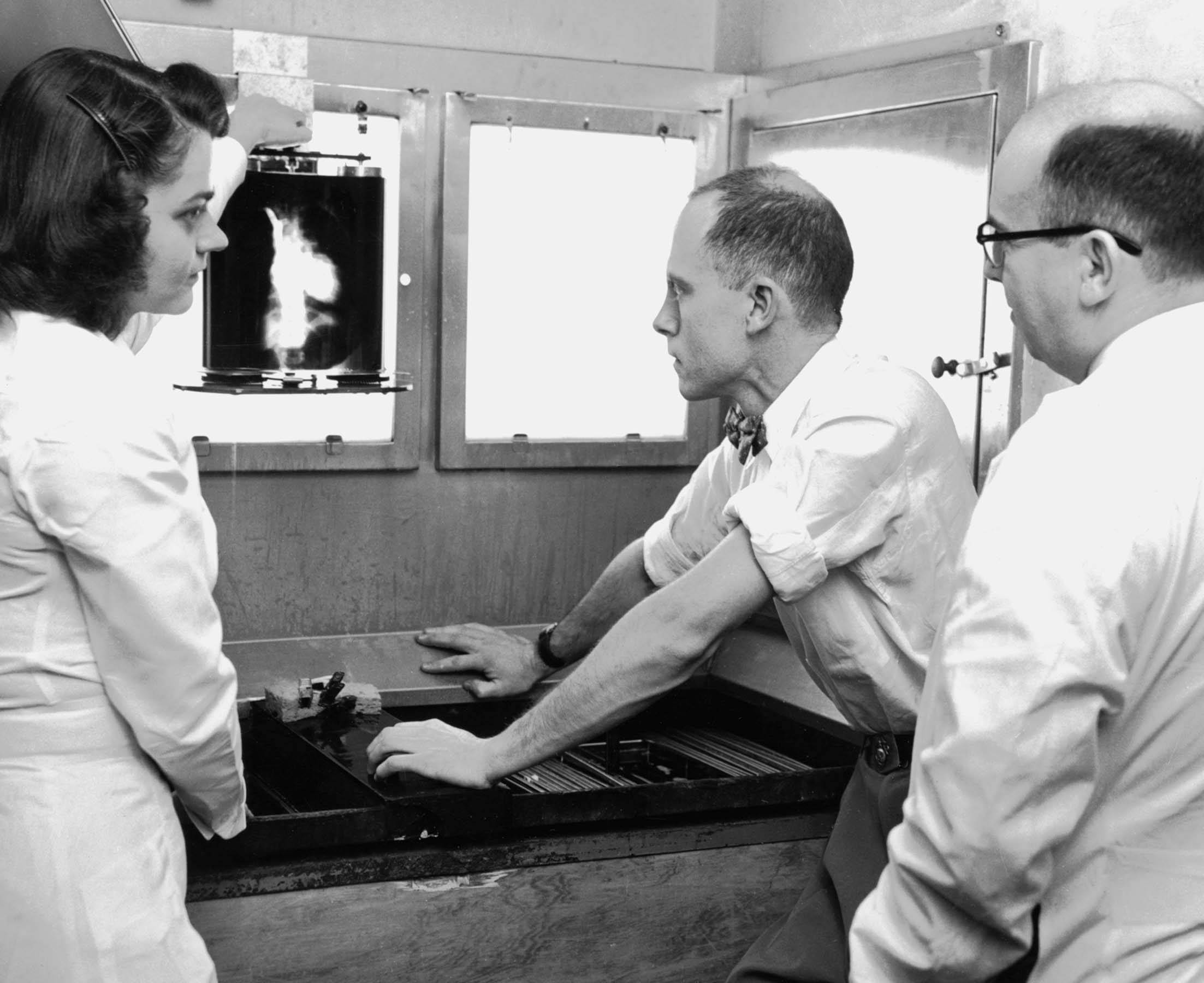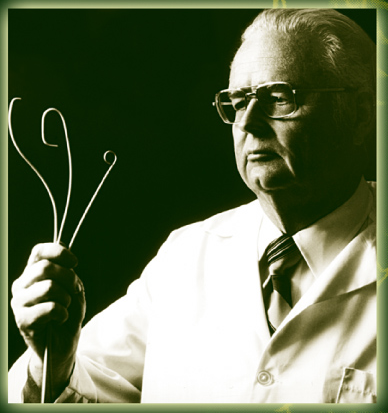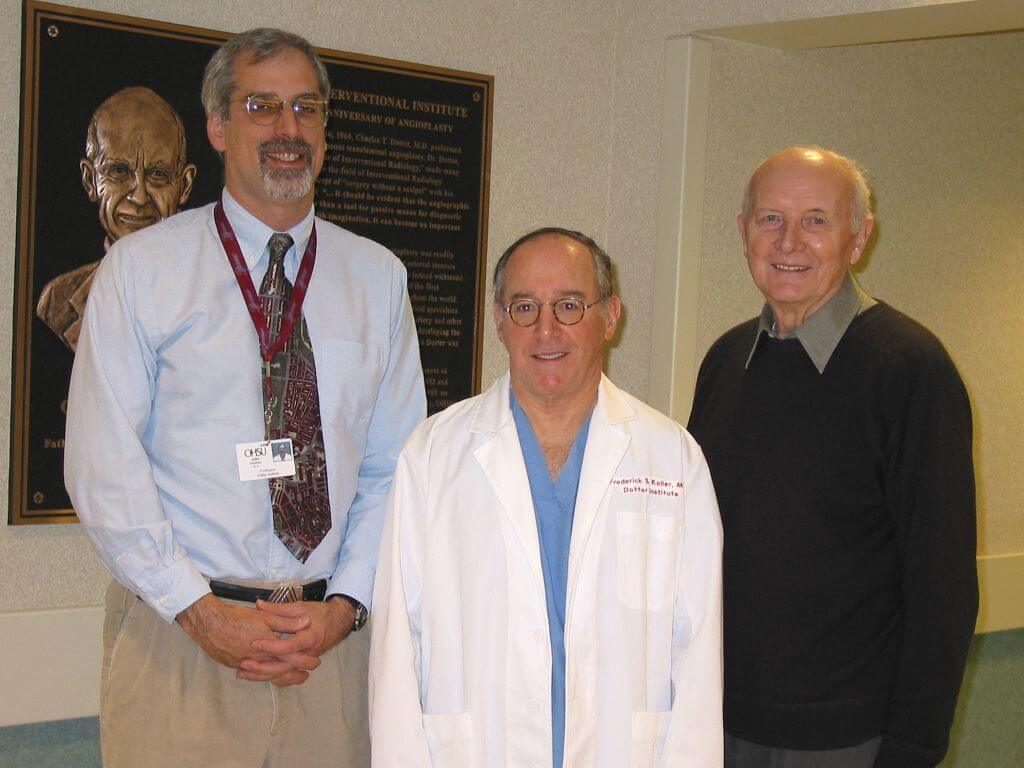History

Charles Theodore Dotter
The Dotter Institute has a rich history and long tradition of excellence in vascular and interventional radiology. This history began with Charles Dotter, former chairman of the OHSU department of radiology from 1952 - 1985, also known as the "Father of Interventional Radiology."
It was in Portland at the University of Oregon Medical School (later changed to OHSU) where Dr. Dotter's unbridled imagination and limitless creativity produced the many innovations that gave birth to interventional radiology. The scope of Dr. Dotter's contributions to vascular and interventional radiology is vast, including the development of the modern grid controlled x-ray tube, flow-directed balloon catheterization, double-lumen balloon catheterization, and the safety guidewire.
Dr. Dotter's best-known contribution to interventional radiology was the introduction of transluminal angioplasty in 1964. Initially met with hostility and skepticism in the United States, this technique was rapidly adopted in Europe. There, the term “dottering” an arterial stenosis became commonplace. Transluminal angioplasty has indeed withstood the test of time. It is now used extensively throughout the world.
In addition to transluminal angioplasty, Dr. Dotter introduced the concepts of percutaneous arterial stenting and stent grafting. He placed the first “coil spring graft" percutaneously in a canine femoral artery in 1969. Charles pioneered the techniques of low dose catheter-directed fibrinolysis, retrieval of intravascular foreign bodies, and the use of tissue adhesive for vascular occlusion and organ ablation.
For all his accomplishments, Charles Dotter was recognized with many awards. In 1978 he was nominated for the Nobel Prize in medicine.

Melvin Judkins
Melvin Judkins, Dotter’s apprentice, was another vascular radiology pioneer who began his career at our institution. While in Oregon, Dr. Judkins developed the technique for percutaneous transfemoral coronary angiography and the catheters needed to perform this procedure successfully. Today, the Judkins technique is the most commonly employed method worldwide for performing coronary angiography.
In addition to coronary artery catheters, Judkins developed the pigtail, cobra, and H-1 through H-4 Headhunter catheter shapes. Dr. Judkins also introduced the "J" guidewire and the concept of applying Teflon coatings to guidewires.

Josef Rosch
Josef Rosch is another giant in vascular and interventional radiology who spent most of his professional career at OHSU. Dr. Rosch conceived and described the technique of TIPS in 1969. He was the first person to control active gastrointestinal hemorrhage by embolization. During his 50+ year career in vascular and interventional radiology, Dr. Rosch has authored over 470 scientific papers and two books.
He is the recipient of numerous awards, including four gold medals from prestigious interventional radiology societies. The Cardiovascular and Interventional Society of Europe and the Czech Interventional Radiology Society set up named lectures in his honor.
With Dr. Rosch as the founding director, in 1990, the Interventional Radiology section separated from the Diagnostic Radiology Department at OHSU to become the Dotter Interventional Institute. The Institute is now an independent, free standing division of the OHSU School of Medicine.
In 1993, Dr. Fred Keller became the Institute's director and recruited the present interventional radiology faculty and current chairman, Dr. John Kaufman.